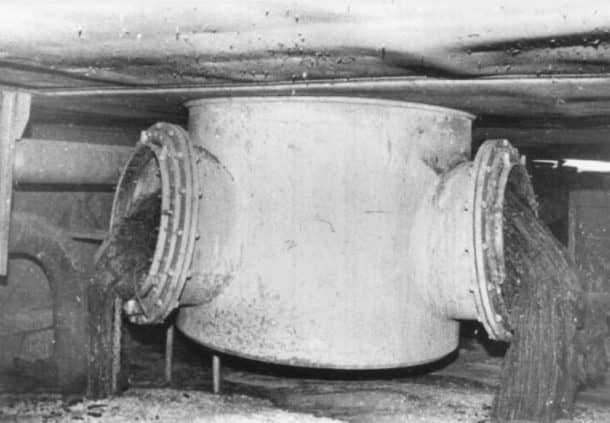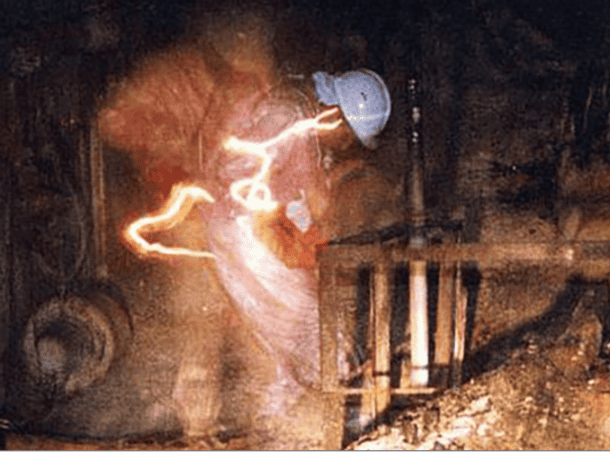Can’t you understand what’s up in the picture? Then let us help you out!
You are looking at one of the largest assimilation of one of the most dangerous and lethal substances known to humankind: corium.
This picture was taken during the awful days of the Chernobyl nuclear disaster, which occurred on April 26, 1986. Corium outbreak was so toxic that staying in the affected room for more than two minutes would result in death. The high radioactivity of this material even made the camera film blurred and grainy.
This particular picture came to America in the late 1990s, after the Ukrainian government tried to control the effects of the leakage at the Chornobyl Center for Nuclear Safety, Radioactive Waste, and Radioecology. They asked the U.S. Department of Energy and the Pacific Northwest National Laboratories (PNNL) for help.

At that time, Tim Ledbetter, the photographer behind this amazing photo, was working in PNNL’s IT department. He was given the task of compiling a digital photo library for the DOE’s International Nuclear Safety Project online catalog. Besides dozens of boring photos of diplomats and bureaucrats shaking hands, his collection had some amazing shots of the ruins inside Unit 4.
This incident caused the leakage of one of the most deadly substances, corium, that escaped its containment. Besides melting the pipes and the equipment in the nuclear center, it turned into a poisonous lava flowing downhill, eventually settling into a three-meter wide cleavage at the corner of a steam distribution corridor, known as the ‘Elephant’s Foot.’
Ledbetter could not exactly remember the location where this photo was taken 20 years ago. Moreover, there were no remains of the website on which these were originally uploaded. But since he is sure that he did not hire anyone else to take a photograph, there is absolutely no doubt that this is one of those old-school selfies.

Besides being incredibly toxic, even today, the temperature of this astounding Elephant’s foot is more than the ambient temperature.
Over 30 workers died from Acute Radiation Syndrome in this Chernobyl debacle, and it didn’t stop Ledbetter to go to the site over and over again. He bravely faced these occupational hazards.
Would you dare to visit such a dangerous site for your professional duties? Think again!


